Continuous galvanizing lines
A continuous galvanizing line (CGL) restores the mechanical properties of the cold rolled steel by heating the strip up to the annealing temperature (recrystallisation), then applies onto its surface a metallic coating by dipping into a molten bath. One of the main goals of the metallic coating is to improve the corrosion resistance of the steel.
Drever International furnaces allow heating the strip in a controlled atmosphere to keep a clean surface suitable for the hot dip galvanization process. They also have a perfect control of the heating and of the cooling rate requested to perform the heat treatment of the most advanced steel grades.
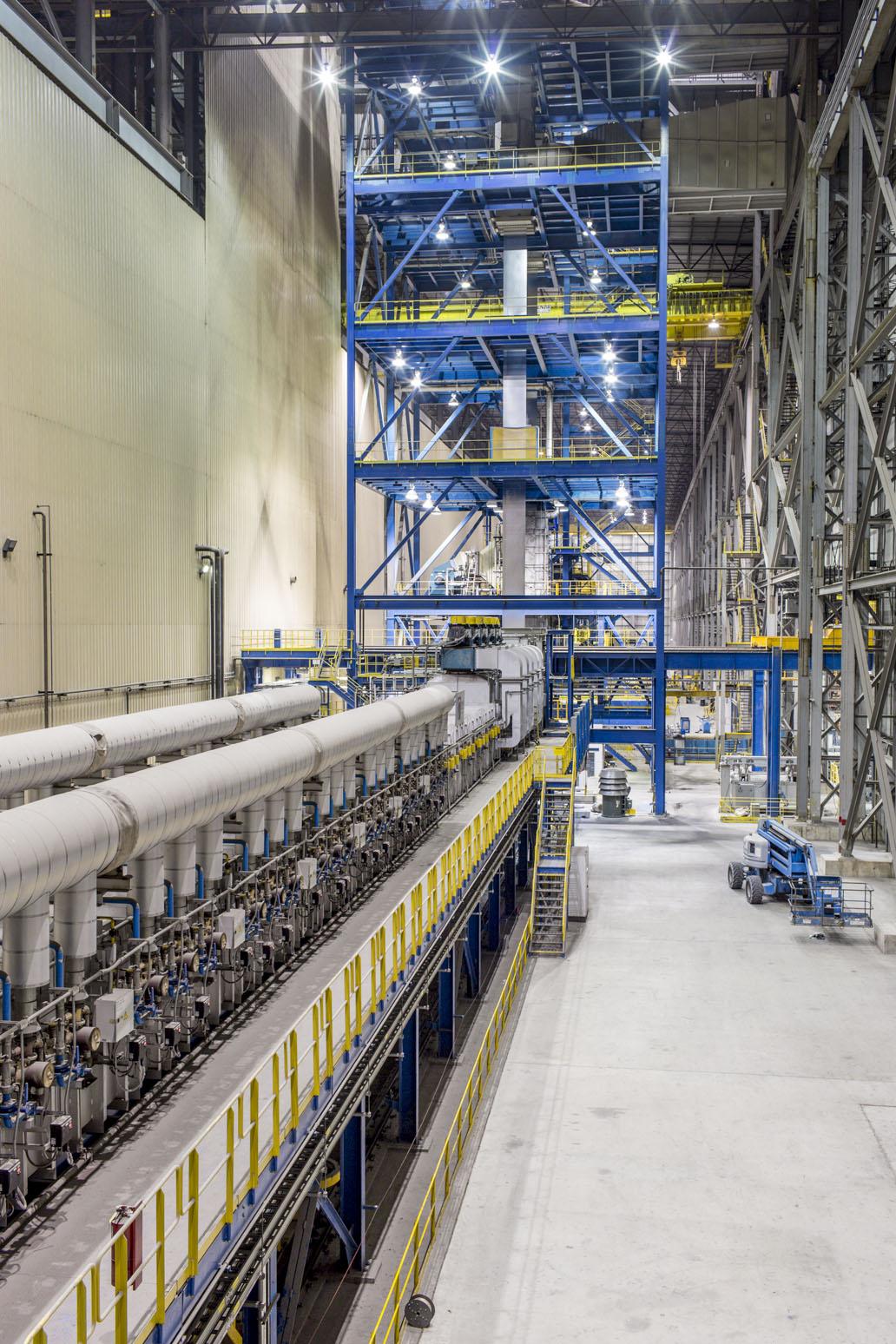
Horizontal RTF and jet cooling with afterpot tower
The throughput of a continuous galvanizing line reaches up to 200 t/h at a strip speed up to 200 m/min. The whole annealing process including heating, soaking, slow and rapid cooling, coating and after pot cooling to ambient air needs only a few minutes.
For thicker gauge material, the steel strip may come directly from the hot strip mill. In such a case, the mechanical properties are not altered by the hot dip galvanization, but the strip must be pickled then heated in the furnace before entering the metallic bath to insure a proper adhesion of the coating on the steel.
For thinner gauge, the thickness reduction is achieved by a cold rolling mill. The steel strip coming from the cold rolling is very brittle, as it has been extensively work hardened. To restore its mechanical properties, it must be reheated to a temperature in the range of 700°C – 850°C: this is the annealing. The annealing temperature is held for a short time: this is the soaking. Then the strip is cooled down to a temperature close to the bath temperature. In order to avoid the oxidation of the strip, the complete furnace is filled by a non-oxidizing HNx atmosphere, a mixture of hydrogen and nitrogen.
The Advanced high strength steels (AHSS) for automotive applications are not only annealed, but they are also heated to a higher temperature to reach the (partial) austenitization of their microstructure. Their production requests the perfect control of the temperature to reach the suitable level of austenite while travelling through the furnace. Our new X-CAP® technology allows the measurement of austenite inside the furnace. A high very cooling rate is also possible with the Ultra-Fast Cooling technology UFCplus.
The latest generation of steels like Q&P (quench and partitioning) includes high level of manganese and silicon. A perfect preparation of the surface of the strip in the furnace is required to guarantee a good adhesion of the coating everywhere on the surface. Our Probox® technology is the best solution to create the ideal surface on the steel before the hot dip galvanizing process.
Our mathematical model as well as our dedicated control system drive the temperature of the different zones of the furnace to reach the requested microstructure and the aimed mechanical properties at the end of the line.
Configurations
Several configurations are possible for the Continuous Galvanizing Lines, depending on the annual production, the final use of the coated products and on the configuration of the industrial site:
- Horizontal
- Vertical
- U shape
- L shape
Some lines can be designed to by-pass the galvanization pot, so they can be used also as a continuous annealing line (CAL mode).
Heating
Drever International relies on a combination of three technologies to reach the desired annealing temperature:
- the direct flame furnace (DFF)
- the radiant tube furnace (RTF)
- the induction heating (longitudinal flux or transversal flux at higher temperature)
The atmosphere of the furnace (RTF and the subsequent cooling section) is made of HNx, a non-oxidizing mixture of nitrogen and hydrogen.
The strip is held at the annealing temperature for a few seconds: this is the soaking. The temperature of the furnace is maintained either by gas-fired tubes, or with electric resistance.
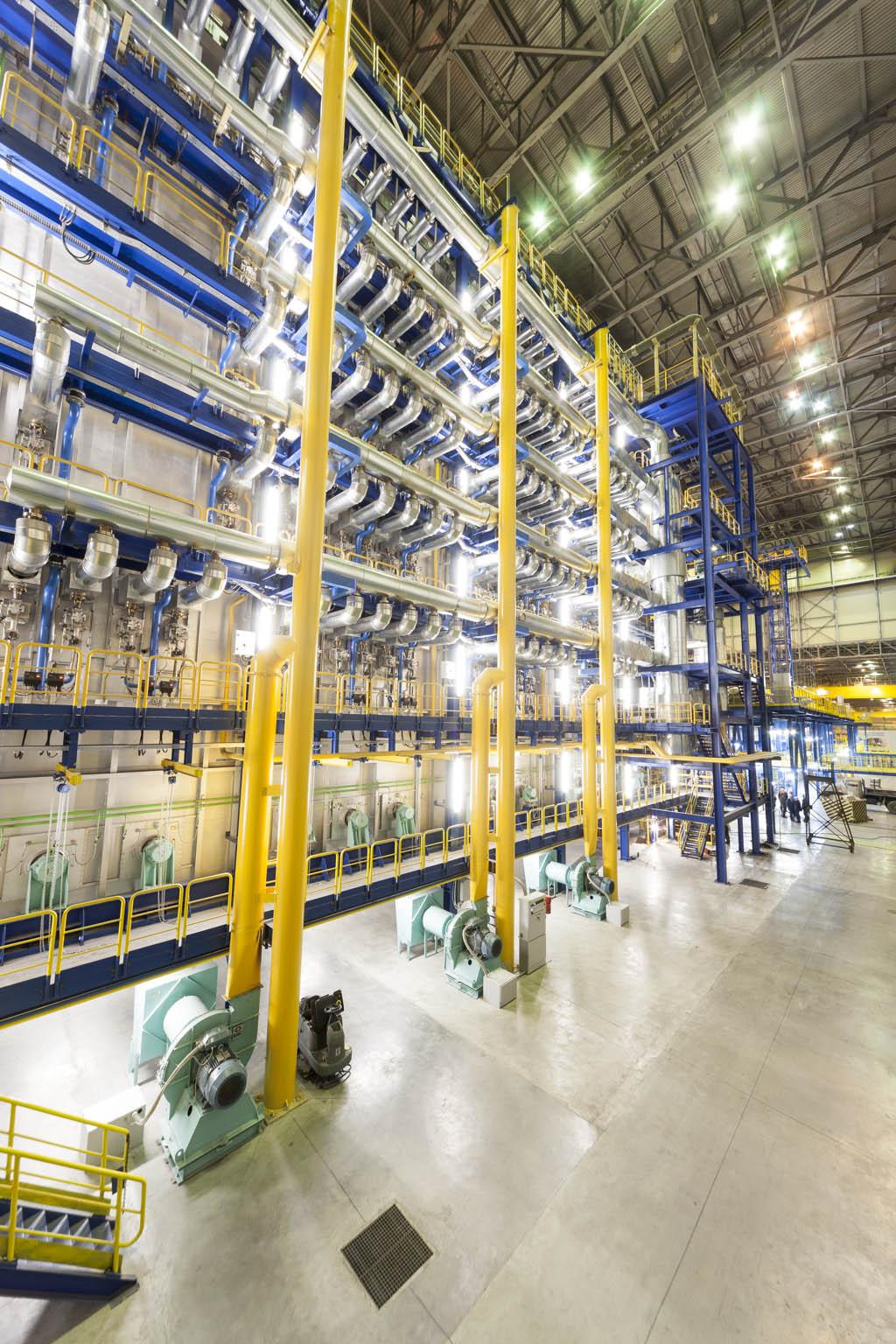
Vertical RTF
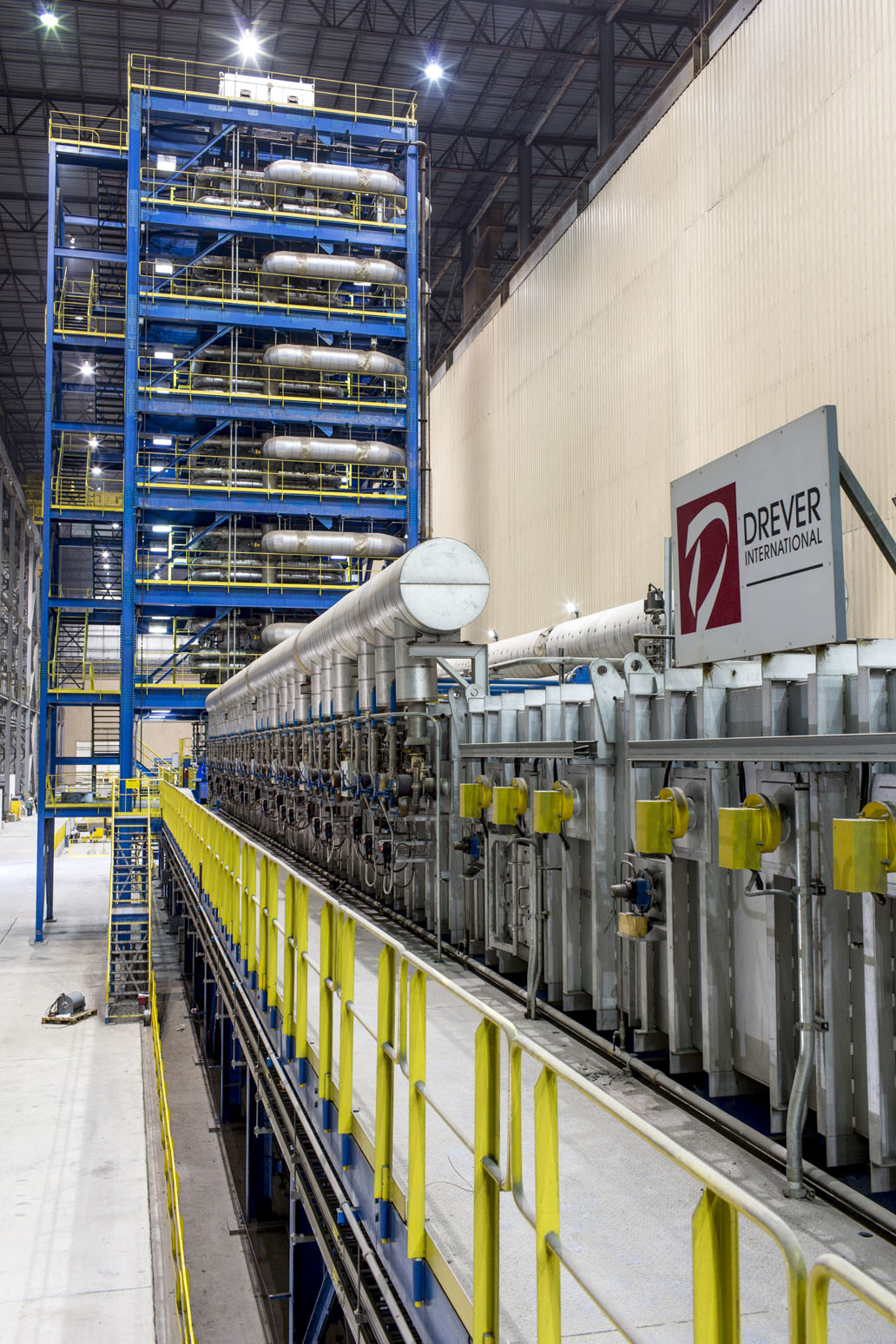
Vertical DFF and horizontal RTF
RTF
- Longitudinal inductive heating (optional booster)
- Radiant tube furnace (with HNx preheating)
DFF + RTF
- Direct flame furnace
- Radiant tube furnace
Transversal inductive heating
In option, a transversal inductive heating can be installed to reach the highest austenitizing temperature used in the latest generation of AHSS steels for automotive.
Cooling
After the annealing and the soaking, the strip is cooled down according to various cycles, depending of the steel grades.
- Slow cool with slotted tubes blowing HNx. Electrical heating can also be included, to extend the length of the soaking for specific steel grades.
- Fast cooling with plenums blowing cold HNx
- Ultra-fast cooling by cold HNx with hydrogen injection. Drever International masters the technologies needed to confine the additional hydrogen inside the ultra-fast cooling section
- Possibility to reheat the strip before galvanization by induction heating after the quenching of AHSS steel grades
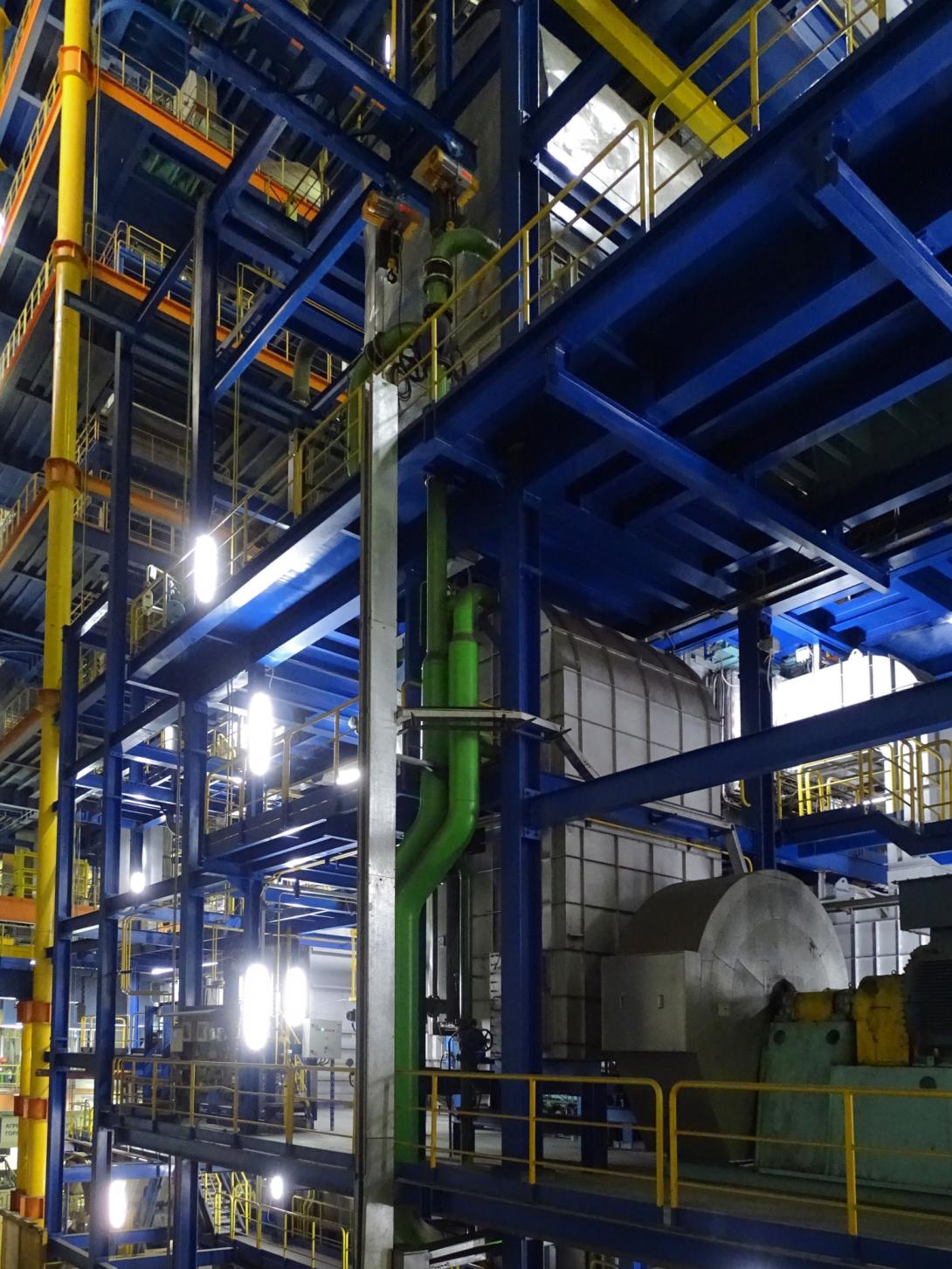
Vertical ultra-fast cooling
Snout
The snout allows the transfer of the strip from the furnace to the bath. It has a tremendous importance for the quality of the coating on the strip.
Drever International has integrated the latest technologies in the design of a snout dedicated for automotive exposed parts.
Snout dedicated to automotive exposed parts
Coatings
During the hot dip galvanization process, the strip goes through a molten metallic coating, whose temperature varies from 420°C to 680°C depending of its chemical composition. Several coatings are possible.
The most common are:
- Zinc
- Zinc-55%Aluminium (Galvalume®)
- Zinc-Aluminium-Magnesium
- Aluminium-silicon (Aluminized type I)
- Aluminium (Aluminized type II)

Galvanization process
Galvannealed
Galvannealing is optionally performed on zinc coating. The strip is reheated after the bath to insure a diffusion of some iron from the substrate into the zinc coating. This requires accurate temperature monitoring at the exit of the galvanneal section.
A galvanneal section is made of three components:
- Induction heating
- Electric or gas soaking
- Edge reheating
Optionnally, the galvanneal furnace can be shifted and replaced by a mobile cooler to cool the strip straight after the bath

Galvanneal furnace
After pot cooling tower
After the hot dip galvanization, the coating must be solidified and the strip must be cooled down to a temperature range of 250°C – 300°C before the top roll. The cooling is performed by cold air blown on the strip and the final cooling is insured by a final water quench.
Drever International provides a precise tracking of the strip in the after pot cooling tower to minimize the vibrations of the strip, and insure the best surface quality.
The after pot cooling tower contains:
- Optional mobile cooler
- Jet cooling with cold air (before and after the top deflector rolls)
- Final cooling with water spray
- Wringer rolls and strip dryer
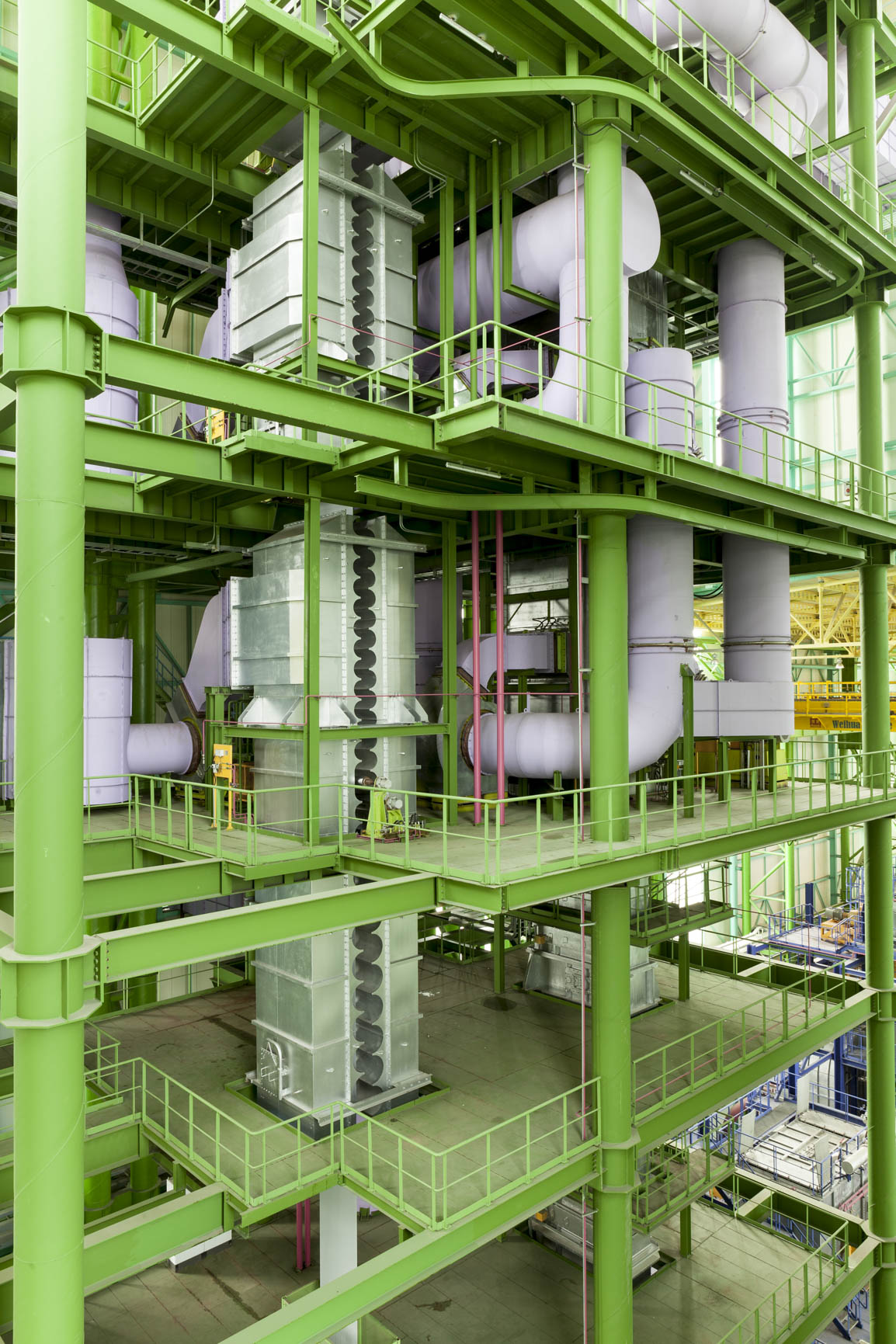
After pot cooling tower
Surface treatment
The coating must be protected against white rust during transportation and storage. Sealant can also be applied for its anti-finger print properties and to decrease the friction coefficient between the metallic coating and the tools used during the transformation of the strip.
These products are often applied by a roll coater, followed by a drying of the surface treatment to insure the evaporation of the solvants. The heating can be done by hot air or by induction heating. The following cooling of the strip is insured by cold air blown on the strip.
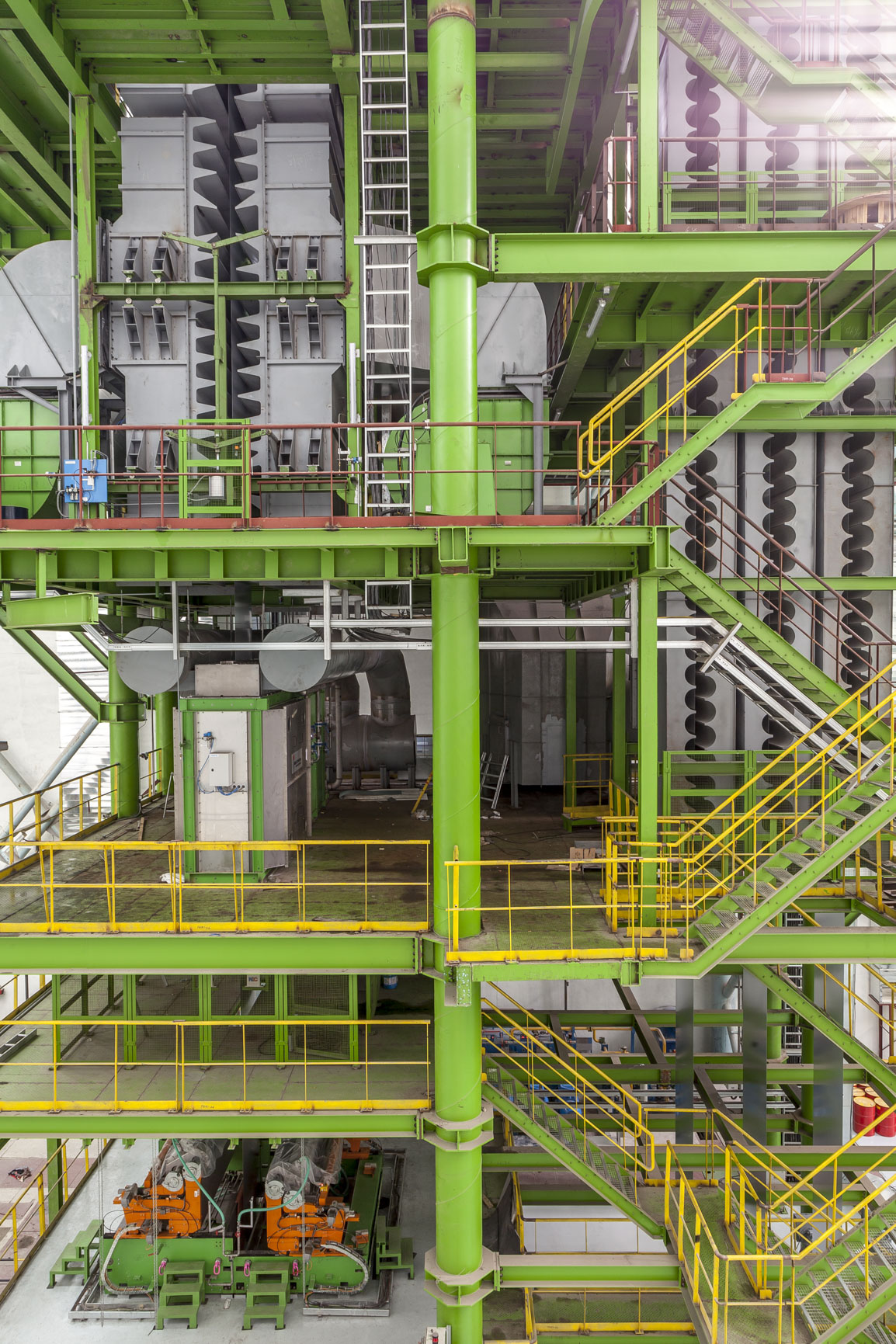
Roll coater, drying by induction and cooling of the surface treatment
Drever International delivers
- The annealing furnace
- The snout
- The afterpot cooling tower
- The drying and cooling of the surface treatment
- The control system and a mathematical model of the furnace
- Patented equipment dedicated to the manufacturing of advanced high strength steels (AHSS): X-CAP® and Probox® technologies
Our parent company, SMS group, and its affiliates deliver all the other equipment of the line.
More information on SMS group offer
